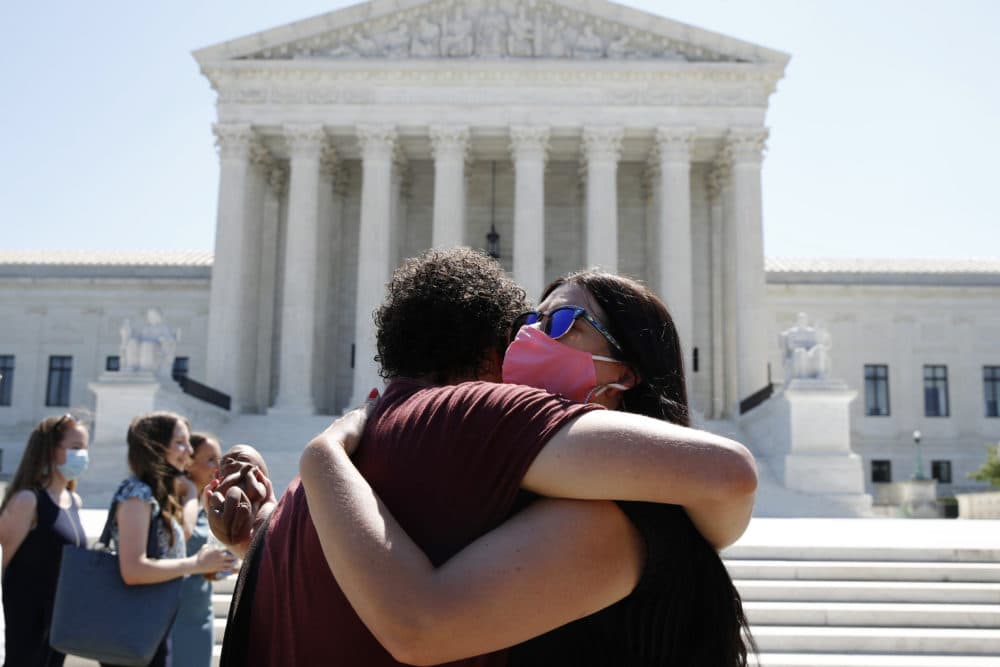Advertisement
commentary
Think Abortion Rights Are Safe Now? Maybe Not

Abortion rights advocates have reason to be relieved with the Supreme Court’s opinion Monday.
In a move that surprised many -- including me -- Chief Justice John Roberts joined the four liberal justices and struck down a Louisiana law that would have greatly limited the number of abortions in the state, forcing many of the state's most vulnerable women to travel long distances, face delays or forgo care altogether. The court’s ruling in June Medical Services v. Russo will allow the state's remaining clinics to continue serving the 10,000 women who seek abortions annually.
But the decision does little to secure abortion rights on a grander scale. In fact, just beneath the surface of this fractured opinion lie troubling warning signs for abortion-rights supporters.
First, the case never should have come before the court. The court struck down a nearly identical Texas admitting-privileges law four years ago in Whole Woman’s Health v. Hellerstedt.
June Medical should have been resolved easily by the court: “Reversed. See Whole Woman’s Health.” Not so fast.
The four liberal justices of the court, led by Stephen Breyer, affirmed and applied the test from Whole Woman’s Health, meticulously going back through the record in this case and engaging in the same detailed factual analysis it had completed four years earlier. The four justices weighed the asserted benefits of the law (none) against the burdens of the law (many), and once again found the admitting-privileges law failed to protect women’s health, while presenting a substantial obstacle to women seeking abortions.
[Roberts's] opinion was the judicial equivalent of holding one’s nose while casting a ballot.
Roberts joined the liberals in supporting the outcome of the case, but he did not support their rationale. He wrote a separate concurring opinion in which he explained that respect for court precedent (a legal doctrine called "stare decisis") and the “perceived integrity” of the court compelled the result. He could see no other option, he wrote, given these facts were “nearly identical” to those in Whole Woman’s Health. His opinion was the judicial equivalent of holding one’s nose while casting a ballot. Importantly, Roberts agreed with the liberal justices in rejecting a last-minute claim by Louisiana that abortion providers lack “standing” to challenge abortion regulations in court on behalf of their patients.
This was an important point of agreement for the future of abortion litigation, but it should never have been such a close call.
At the same time, Roberts ideologically aligned himself with the four dissenting justices in expressing his disdain for Whole Woman’s Health. He wrote, “I joined the dissent in Whole Woman’s Health and continue to believe that case was wrongly decided.” He went on to lay the groundwork for overruling Whole Woman’s Health in a future case on a different set of facts. This leaves five justices — a majority — who seem poised to narrow the court’s precedent if confronted with a different abortion regulation. Under such a reformulation, more regulations could be upheld — perhaps including some of the most radical, like gestational bans or procedural bans.
[T]he opinion will do little to stem the tide of abortion regulation and litigation. Quite the opposite.
Next, June Medical Services provided Justices Neil Gorsuch and Brett Kavanaugh with their debut in the abortion arena, and they’ve lived up to President Donald Trump’s anti-abortion promises. Kavanaugh joined most of a dissent written by Justice Samuel Alito, and Gorsuch joined all of it. The dissent skewered Whole Woman’s Health and engaged in a fictional recreation of the record, somehow distinguishing the Louisiana law from its nearly identical Texas twin. Gorsuch positioned himself even farther to the right, joining Alito in arguing that abortion providers should not have the right to sue on behalf of patients. Gorsuch went further still, writing a separate dissent that grossly exaggerates the danger of abortion (it’s an extremely safe procedure) and places him farther along the anti-abortion spectrum than many suspected.
June Medical Services reveals not only a court deeply divided on abortion rights, but also one that has shifted to the right on the issue and is ready to shift further still. In this context, the opinion will do little to stem the tide of abortion regulation and litigation. Quite the opposite. Abortion opponents will double down on their efforts to regulate abortion with ever more draconian restrictions, and they will try their hardest to get those cases before this friendlier Supreme Court. There are currently 16 abortion cases working their way through the appeals courts.
A lot can happen between now and the next Supreme Court abortion case — including an election that could reshape the White House and the Senate. As things stand now, however, June Medical Services offers only a temporary reprieve for abortion rights advocates.
